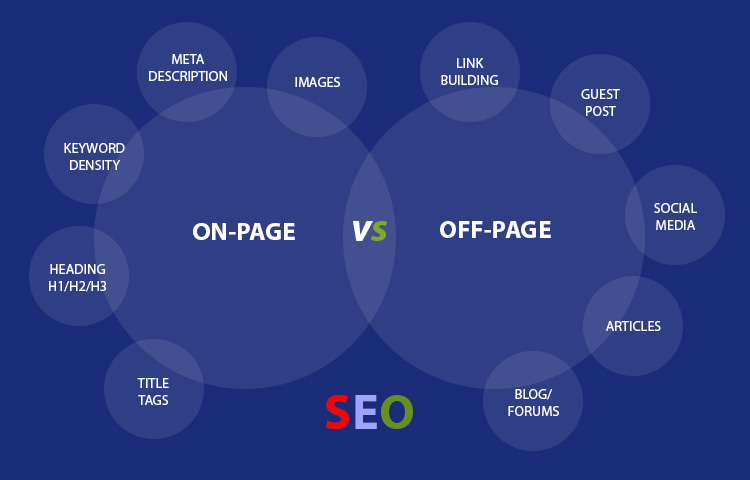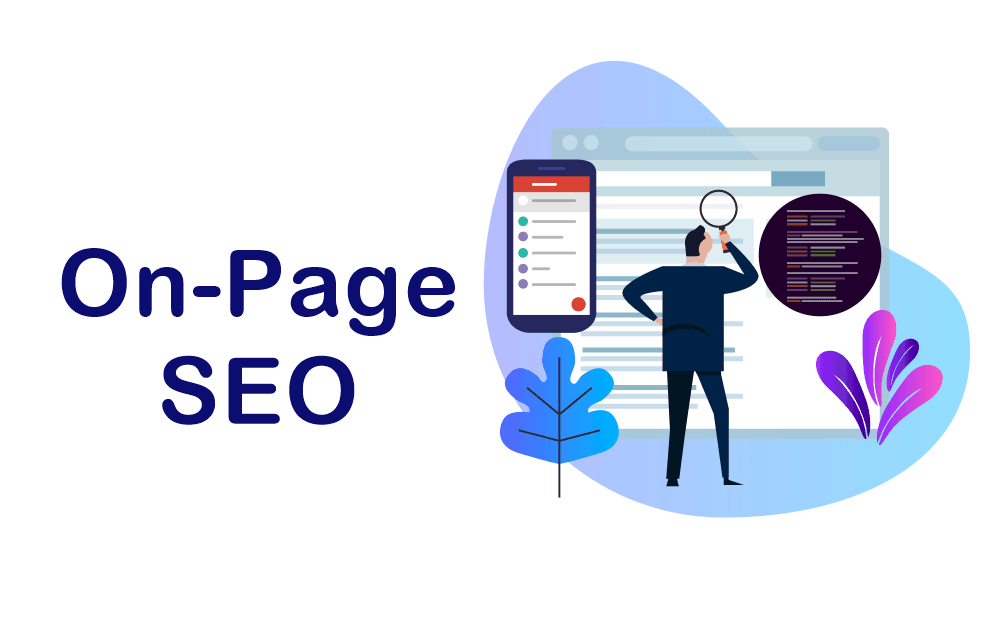On-Page SEO
- Now your website will become much more visible, readable and loved by search engines!
Understanding On-page SEO
On-page SEO is a key strategy to optimize your web pages so that the page gets a higher ranking in the search results. On-page SEO consists of wholesome aspects that you can improve and considers features that can be controlled by you on your website. The key parameters include the technical elements, the site’s appearance, and content quality.
It is you who can control the influencing factors in an on-page SEO. These services can help in managing all the factors that can enhance your site’s performance, rank it above the competition, and get you more leads.
Factors influencing On-page SEO
Quality of content
The main factor that attracts a user to visit your site is the quality of the information provided by the webpage. Google understands that visitors need helpful information, so your page’s content becomes a crucial factor in rankings. The content must match the user’s needs. When you create your site, you need to be careful with keyword matches, and this forms an essential aspect of on-page SEO services.
Title tags
Title tags again have a strong influence on your ranking. The title is like the first impression of your audience. It creates an impression about the website and lets them decide whether they wish to click on your page or not. Google looks at the title tag to ensure the title matches the content of the webpage or not. You must have a crisp and concise title tag to attract a wider audience.
URLs
URLs play an important part in SEO ranking. Google loves shorter URLs as they are easy to understand and read. You always want that the URL must include significant keywords. Placing keywords in URLs makes it easy for Google to understand the context. A URL must also be SEO-friendly so that your audience and Google do not struggle to remember it.
Meta tags
Meta tags help your page rank better with the use of the right keywords. They form another crucial aspect of on-page SEO. Using On page SEO services helps you with using custom Meta tags. It improves the click-through rate and attracts more people by optimizing your tags.
On-page SEO vs. Off-page SEO

On-page SEO includes various elements of the site that are under your control. It consists of the technical set-up, content quality, and easy-to-use interface. All these elements can be controlled and changed by you.
Off-page SEO includes various elements of the site that are not under your control, like the backlinks. You can invite backlinks but can’t control if they will link to your site or not. Social media interactions are another Off-page SEO service. It is not under your control if the user will like, share, or comment on your posts.
In a nutshell, on-page SEO factors can be controlled by you, while off-page SEO factors are not under your control. Both these factors are a vital part of the SEO campaign.
On-Page SEO Tips
but here are some easy tips that will help you optimize the On-page SEO.
1. Opt for appropriate keywords
SEO is completely based on keywords. You need to choose the most relevant keywords if you want higher rankings for your page. The keywords determine whether the Google algorithm will notice your page or not. You must search for relevant keywords to enhance the SEO. You can look for different options and then decide on the best for your business.
Generally, Long-tail keywords are thought to be the best for any business. These contain three or more words and get you more leads looking for this exact keyword. Short-tail keywords face more competition which leads to ranking challenges. Your target keywords must have a high search volume so that they drive higher traffic. Place these keywords in the first 150 words of the text to rank better in the search results.
2. Use a keyword in your title tag
Title tags have a strong influence on your ranking. The title is the first impression on the audience, and it lets them decide whether they wish to browse through your page or not. Google looks for title tags to make sure that they match the content of the webpage. Ensure that Google notices your keywords by placing them in your title tag. Keywords placed near the beginning hold more weight as it is the first thing read by search engines.
3. Focus on Meta descriptions
You must use all relevant keywords in your Meta description. It is the small description under your title tags that give a quick preview of what to expect on the page. These Meta descriptions must include the relevant keywords so that your audience understands what kind of content to expect on your page. Incorporating keywords also lets Google understand the content on your page better. It goes through this description to rank the page better.
4. Must have visual effects
Having visuals and images keeps the audience engaged on your page. People do not just want to read the text. They need the information in the form of visual elements. It may include the use of pictures, diagrams, videos, and Infographics. The use of visuals is also eye-catching and attracts the attention of the users. They also reduce the bounce rate. A high bounce rate affects the SEO negatively. Google lowers the page ranking as it thinks that people are disinterested in your page. Visual elements increase time spent on the site. It shows that people are interested in browsing through the site.
5. Image Optimization
Image optimization forms an integral part of On-page SEO. To optimize the images, you must include your target keyword in the image file name. It will enhance your ranking in the search results. You can also incorporate relevant keywords in alternative text to ensure that people understand what the image means and how it is related to the posted content. You must also optimize the file size, as larger images will slow down your site. Large videos can increase the loading time. Optimizing the image size will help to improve the site running time.
6. Site’s responsiveness
One crucial aspect of On-page SEO is to have a mobile-friendly site. It highly influences your SEO ranking. Almost every user likes to open pages on their mobiles. Google is pushing to create a mobile-friendly website to enhance the user experience. A responsive design will make your page mobile-friendly.
7. Post-quality content
The quality of content plays a vital impact in your SEO ranking. Content attracts valuable leads and pushes conversions. The content needs to influence your audience. Always focus on sharing relevant information, answering all the queries, and keeping the audience informed about latest additions. Quality content keeps them engaged with your webpage and creates a great opportunity to convert these leads. Content impacts SEO ranking too. It gets you repeat users as they find the site valuable and exciting. Be creative and innovate what you post.
8. Create internal links
Internal linking will keep the leads staying longer. Linking within your content can guide the users to relevant pages and spend more time on the website. Google will rank the page higher as it believes that the page is using the keywords as valuable and relevant information.
Optimize your SEO with our On-page SEO services
Now that you’re well-versed in the positives of On-page SEO services let us optimize your page’s performance and enhance the rankings. Contact us online or call us to speak to our experts about partnering with the On-page SEO team. We are keen to make your business grow!

